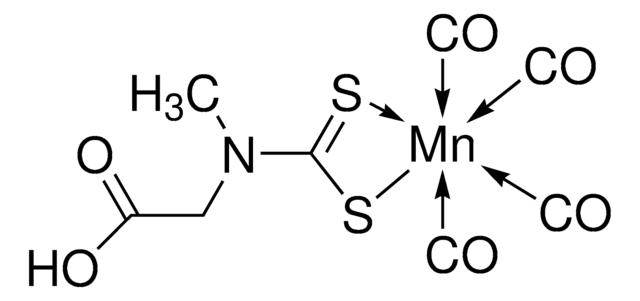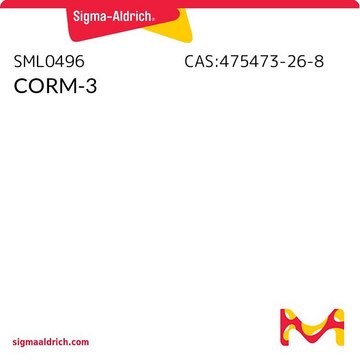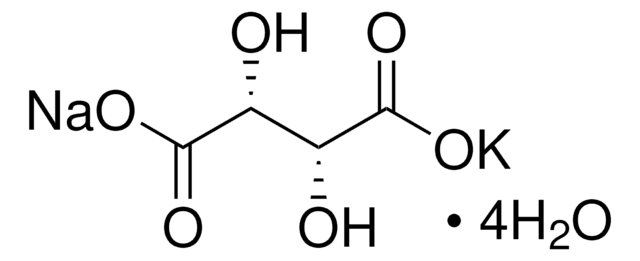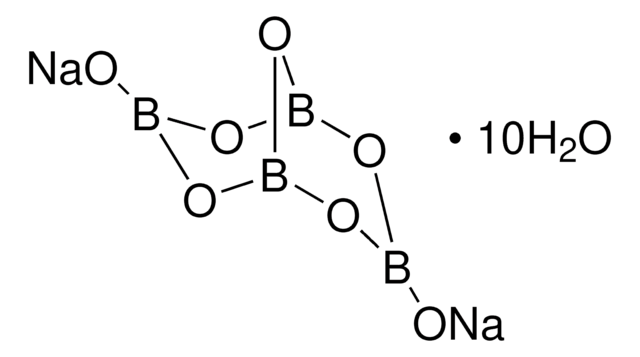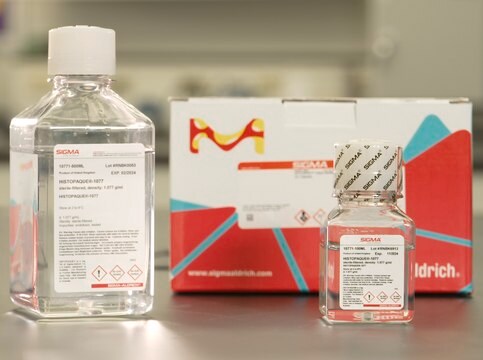Wichtige Dokumente
SML0315
CORM-A1
≥95% (NMR)
Synonym(e):
Sodium boranocarbonate
About This Item
Empfohlene Produkte
Assay
≥95% (NMR)
Form
powder
Lagerbedingungen
desiccated
Farbe
white to beige
Löslichkeit
H2O: >15 mg/mL
Lagertemp.
room temp
SMILES String
[Na+].[Na+].[BH3-]C([O-])=O
InChI
1S/CH4BO2.2Na/c2-1(3)4;;/h2H3,(H,3,4);;/q-1;2*+1/p-1
InChIKey
SOFPSQNQOQPAAJ-UHFFFAOYSA-M
Anwendung
- to deliver carbon monoxide (CO) and to test its cytoprotection in yeast and primary astrocytes culture during oxidative stress
- as CO donor in murine macrophages J774A.1 cells to test its effect on cellular β-endorphins elevation
- to test its effect on mitophagy activation in retinal ganglion cells
Biochem./physiol. Wirkung
Lagerklassenschlüssel
11 - Combustible Solids
WGK
WGK 3
Flammpunkt (°F)
Not applicable
Flammpunkt (°C)
Not applicable
Hier finden Sie alle aktuellen Versionen:
Analysenzertifikate (COA)
Die passende Version wird nicht angezeigt?
Wenn Sie eine bestimmte Version benötigen, können Sie anhand der Lot- oder Chargennummer nach einem spezifischen Zertifikat suchen.
Besitzen Sie dieses Produkt bereits?
In der Dokumentenbibliothek finden Sie die Dokumentation zu den Produkten, die Sie kürzlich erworben haben.
Kunden haben sich ebenfalls angesehen
Unser Team von Wissenschaftlern verfügt über Erfahrung in allen Forschungsbereichen einschließlich Life Science, Materialwissenschaften, chemischer Synthese, Chromatographie, Analytik und vielen mehr..
Setzen Sie sich mit dem technischen Dienst in Verbindung.

